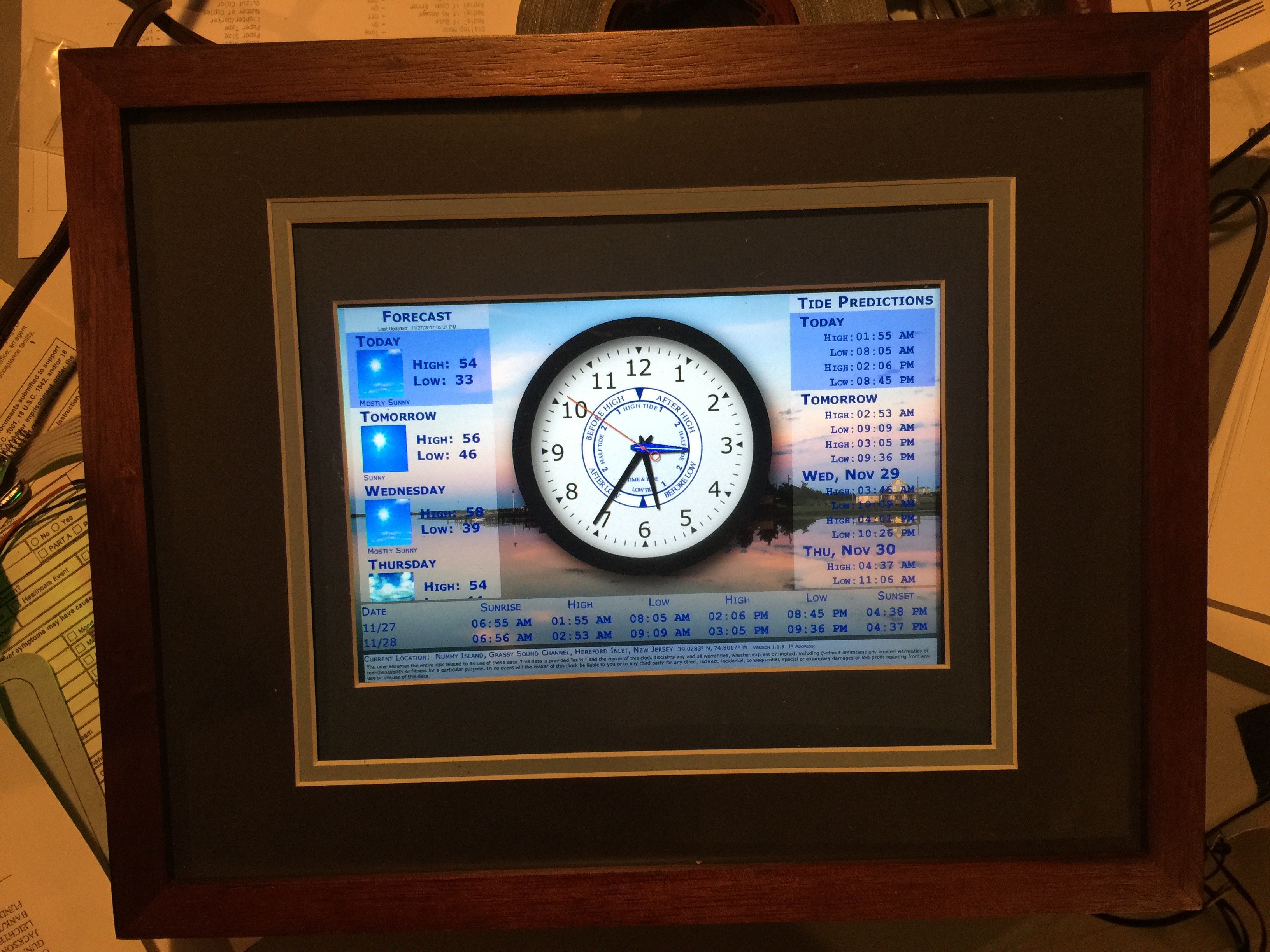The features I wanted the clock to have are:
- 3 dimensional analog face with an accurate tide hand
- 7 day weather forecast
- 30 day tide chart
- Summary of Tide for Today and Tomorrow (with sun rise and sunset, since I had the space)
- Some legalese at the bottom should I ever want to sell this to someone
- Ability to configure location and Internet connection via web page setup
Here's a video of the Clock in operation:
 Thomas Snow
Thomas Snow




Brilliant idea and something I would truly use. I have not seen any recent updates from the project originator. Have any further development taken place?